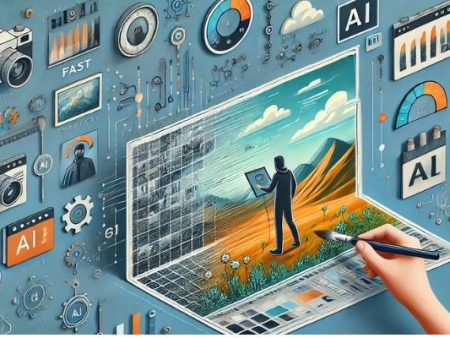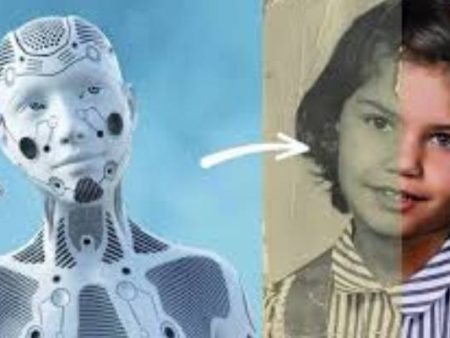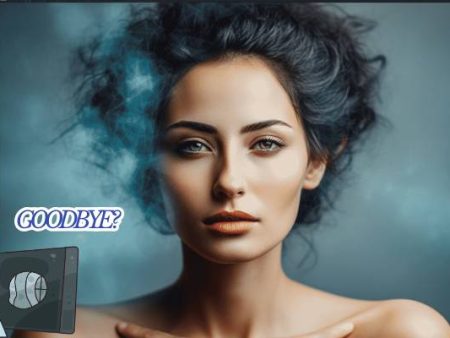Do you remember the first time you opened Photoshop? That blank workspace, the layers panel staring back at you, and the infinite possibility of “what if I just tried this effect?”
For many of us, Photoshop wasn’t just software—it was an initiation into modern creativity. It was the moment we realized we could shape images, not just capture them.
But fast-forward to today, and things feel dramatically different. The rise of AI image generation has shifted the entire conversation.
We’re not only asking what can I fix or retouch?—we’re asking what can I invent from nothing?
This isn’t simply an upgrade in tools. It’s a creative revolution. And with every leap forward, there are questions, tensions, and even fears.
So what does the path from Photoshop to AI really mean for the future of photo editing? And where do we go from here?
From Retouching to Reinvention: A Short History
It’s worth pausing to see the bigger picture before diving into the AI era.
- The Photoshop Era (1990s – 2010s): For decades, Photoshop was the backbone of photo editing. Whether for graphic design, advertising, or digital art, it became synonymous with creativity itself. It democratized skills once reserved for darkrooms and professional studios.
- Mobile Democratization (2010s): Apps like Snapseed, VSCO, and Instagram filters made editing accessible to anyone with a smartphone. Suddenly, a teenager on a bus had more editing power than professional designers did in the early 2000s.
- AI Emerges (2020s): Enter DALL·E, Stable Diffusion, MidJourney, and Photoshop’s own AI-powered updates. Now the question isn’t just how do I make this picture better? but can I create an entirely new picture with nothing but text?
This leap is more than technological—it changes the philosophy of editing itself. Editing once meant enhancing reality. Now, it can mean fabricating new ones.
Why This Leap Feels So Radical
The difference between Photoshop and AI isn’t just speed or complexity. It’s the mindset.
When you sit down with Photoshop, you’re still working with something—an image, a photo, a graphic. It’s about manipulation.
But AI flips the table. With a few keystrokes, you can summon a desert sunset, a futuristic skyline, or a Renaissance-style portrait of your dog.
And here’s where things get sticky: people aren’t just experimenting with AI images for fun. They’re selling them, marketing with them, and even exhibiting them.
Suddenly, we’re confronting issues with that rivals human creativity, sparking debates about authenticity, originality, and value.
The Numbers Don’t Lie: AI Is Here to Stay
If you think this is a passing trend, the data says otherwise.
- According to Grand View Research, the global AI image generator market was valued at $7.6 billion in 2022 and is projected to grow by over 20% annually through 2030.
- Adobe itself has embraced AI, embedding features like “Generative Fill” into Photoshop, signaling that traditional editing tools are merging with AI instead of resisting it.
- A Pew Research study revealed that nearly 62% of Americans expect AI to have a major impact on creative work within two decades.
That means this isn’t just about artists or designers. This is a cultural shift that will impact how we view, consume, and trust images in daily life.
Why AI-Generated Images vs Stock Matters
Let’s address one of the most practical shifts: stock photography.
For decades, stock photo libraries have been the bread and butter of media production. Need a smiling office worker? Stock photo. Need a sunset over mountains? Stock photo.
But now? Anyone can generate these images instantly, in any style, with no licensing fees. This isn’t just a convenience—it’s a disruption.
Businesses, bloggers, marketers, and small agencies are asking: why pay for stock when I can create exactly what I need in seconds?
This is precisely why AI-generated images vs stock matters. It’s not about aesthetics—it’s about economics, accessibility, and control.
Stock photos once standardized the visual language of advertising. Now AI is fragmenting it, allowing hyper-specific, tailor-made visuals that stock libraries simply can’t keep up with.
Artists in the Crossfire
Here’s where the emotional reality sets in.
Imagine being a photographer who built a career supplying stock photos, only to realize your livelihood is being undercut by free or cheap AI outputs.
Or being a digital illustrator, watching someone reproduce your style with a single prompt.
For many creators, AI feels less like a tool and more like an intruder. It raises existential questions: What is my role if a machine can mimic me?
I’ve spoken with artists who describe this moment as both exhilarating and terrifying. Some see AI as a collaborator, a partner that expands their toolkit.
Others see it as theft—scraping their portfolios without consent and redistributing their craft. Both feelings are valid.
And acknowledging that emotional complexity is essential if we’re going to have an honest conversation about AI’s role in art.
AI Insights on Rise of Text-to-Image Tools:
So what exactly is driving this wave? The short answer: accessibility.
- Text-to-image tools like DALL·E, MidJourney, and Stable Diffusion have made the creative process as simple as typing a sentence.
- According to Statista, by 2023 nearly 27% of U.S. adults reported having tried an AI text-to-image tool. That’s an astonishing adoption curve for such a new technology.
- These platforms aren’t just popular—they’re communal. Discord servers, online forums, and social groups have sprouted where users trade prompts like recipes.
This is where the AI insights on rise of text-to-image tools: become fascinating. Creativity is no longer just about the output—it’s about the language you use to get there.
Prompts are becoming the new brushes, and “prompt engineering” is quietly turning into an art form of its own.
A Guide to Why AI Image Generators Matter
So why should we pay attention? Why not just dismiss AI as another passing tech fad? Here’s a straightforward guide to why AI image generators matter in the context of photo editing:
- Democratization of Creativity
- People with no technical skills can now produce high-quality visuals. That’s unprecedented access to creative expression.
- Efficiency in Workflows
- Designers and agencies are using AI to generate mockups, mood boards, and variations in seconds—saving hours of manual work.
- Economic Disruption
- Industries built on licensing, like stock photography, are already being restructured.
- New Artistic Languages
- Prompting and curation are emerging as legitimate creative skills, opening new artistic identities.
- Ethical Challenges
- Copyright, authenticity, and bias remain unresolved and pressing.
In short: ignoring AI image generators would be like ignoring digital photography when it first appeared.
The Authenticity Question
One of the thorniest questions in this evolution is authenticity.
When you look at a photograph, there’s an implicit trust—it’s grounded in reality, even if staged.
With Photoshop, we started to accept manipulation, but there was still a real photo underneath. With AI, that tether is cut.
So how do we trust what we see? How do we know whether an image is a memory, a manipulation, or a hallucination of a machine?
These aren’t just philosophical questions. They affect journalism, education, advertising, and even our personal relationships with images.
What’s Next for Photo Editing?
Here’s my prediction: we’re moving toward hybridization. Photoshop and similar platforms will increasingly integrate AI directly into their workflows.
Already, Adobe’s Generative Fill is proof of this. Editing won’t disappear—it’ll evolve.
- Traditional editing skills will still matter—composition, color theory, and design principles aren’t going away.
- AI will handle the grunt work—replacing backgrounds, expanding images, and generating options instantly.
- Human creativity will become the differentiator—the spark, the vision, the story that AI can’t fully replicate.
In other words, the best creatives won’t be the ones who resist AI entirely, but the ones who learn how to guide it with intention.
Conclusion: A Human Story After All
The journey from Photoshop to AI is about more than software. It’s about us—our fears, our hopes, our need to create and connect.
The tools may change, but the desire to shape images, to tell visual stories, remains timeless.
Will AI replace photo editing as we know it? Possibly. But more likely, it will reshape it, merging imagination and technology in ways we’re only beginning to grasp.
And here’s my honest take: tools don’t define art, people do. Photoshop didn’t kill painting. Photography didn’t kill illustration.
And AI, as disruptive as it is, won’t kill creativity. What it will do is challenge us—forcing us to rethink what creativity means in a world where machines can make pictures too.
The real question is whether we meet this challenge with fear or with imagination.


